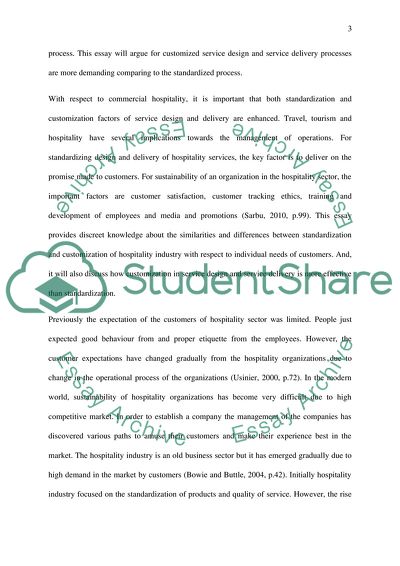Cite this document
(“Customization Assignment Example | Topics and Well Written Essays - 3000 words”, n.d.)
Customization Assignment Example | Topics and Well Written Essays - 3000 words. Retrieved from https://studentshare.org/tourism/1687890-compare-and-contrast-the-service-design-and-delivery-of-commercial-hospitality-that-is-intended-to-be-standardised-ie-mass-market-with-that-which-is-intended-to-be-more-customised-to-meet-the-individual-needs-of-customers
Customization Assignment Example | Topics and Well Written Essays - 3000 words. Retrieved from https://studentshare.org/tourism/1687890-compare-and-contrast-the-service-design-and-delivery-of-commercial-hospitality-that-is-intended-to-be-standardised-ie-mass-market-with-that-which-is-intended-to-be-more-customised-to-meet-the-individual-needs-of-customers
(Customization Assignment Example | Topics and Well Written Essays - 3000 Words)
Customization Assignment Example | Topics and Well Written Essays - 3000 Words. https://studentshare.org/tourism/1687890-compare-and-contrast-the-service-design-and-delivery-of-commercial-hospitality-that-is-intended-to-be-standardised-ie-mass-market-with-that-which-is-intended-to-be-more-customised-to-meet-the-individual-needs-of-customers.
Customization Assignment Example | Topics and Well Written Essays - 3000 Words. https://studentshare.org/tourism/1687890-compare-and-contrast-the-service-design-and-delivery-of-commercial-hospitality-that-is-intended-to-be-standardised-ie-mass-market-with-that-which-is-intended-to-be-more-customised-to-meet-the-individual-needs-of-customers.
“Customization Assignment Example | Topics and Well Written Essays - 3000 Words”, n.d. https://studentshare.org/tourism/1687890-compare-and-contrast-the-service-design-and-delivery-of-commercial-hospitality-that-is-intended-to-be-standardised-ie-mass-market-with-that-which-is-intended-to-be-more-customised-to-meet-the-individual-needs-of-customers.


